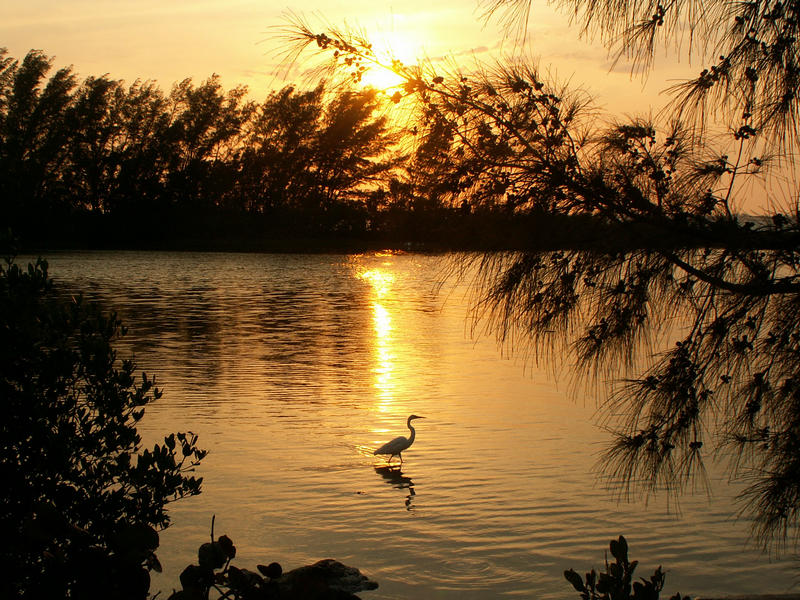General Information
It is important to know the locations of any underground utility locations before beginning any invasive site work. “Utilities” are defined as any subsurface structure that may be damaged by, impede or affect the performance of the investigative work. Although the focus is often on underground utilities, aboveground utilities also must be accounted for in the performance of site work, but the aboveground utilities tend to be much easier to locate than the underground ones. Due to the serious potential consequences of contacting, or causing damage to various utility conduits, many specific requirements are imposed by the utility providers and other governing authorities regarding proper notification and locating procedures.
The Contractor is responsible for compliance with all such requirements that may apply to their activities and those of their subcontractors.
The Sunshine State One Call Center of Florida (SSOCOF) was formed at the direction of the Legislature to administer Chapter 556 of the Florida Statutes, “Underground Facility Damage Prevention and Safety.” The SSOCOF does not locate utilities, but does notify its members who, in turn, may make their own arrangements for locating services in their rights-of-way. Be aware that the SSOCOF does not guarantee accurate locates on private property although a request may still be made. The law has specific notification requirements for the actual “excavators,” which in many cases are subcontractors to the Petroleum Restoration Program (PRP) Contractor.
Time and extra mobilizations for the PRP Contractor to locate and mark utilities on-site or on an off-site property is not allowed. However, consideration should be given to take note of utilities and mark out areas that will require invasive work during any pre-construction or pre-drilling onsite meeting. The SSOCOF can be instructed to take special care to locate all utilities in and around these marked areas. Contractors are expected, under the standard of care as outlined in the Agency Term Contract, to conduct the necessary research to determine the location of utilities and then use caution when performing intrusive services, whether on-site or off-site, consistent with procedures described for investigations near petroleum systems as outlined below.
Off-site Utility Clearance
Contractors are required to have the underground utility locations identified before beginning any subsurface work in any right‑of‑way. Such work includes soil borings and well installations. The utility survey must be performed no more than two weeks prior to the time the Contractor begins the work. Utility locator services perform this task for free. Note that the right-of-way may sometimes extend well onto the site. You should always check the site map carefully to determine whether any of the proposed well or boring locations may be in the right-of-way. Regardless, the standard practice is to post hole or hand auger to a depth of four feet to verify that the location is clear of utilities.
On-site Utility Clearance
Contractors must also clear boring locations prior to work on-site. The utility locator services do not guarantee the marked locations of on-site utilities. Just like performing off-site underground work, the standard practice is to post hole or hand auger to a depth of four feet to verify that the location is clear of utilities. The Contractor should obtain copies of blueprints or as-built drawings before beginning work on-site. These should be readily available for recently constructed facilities.
When selecting a boring location, the Contractor should carefully note the location of utility survey markings from the right-of-way, utility manholes, electric utility risers, utility meters, and phone or cable entry points. The Contractor should also note any changes (usually linear type features) on the surface or pavement that could indicate a potential buried utility.
Occasionally, a Contractor or the Owner/Operator may request a specific on-site utility locating service (e.g., ground penetrating radar). These requests should be evaluated on a case-by-case basis. Such subcontractors may be allowed in extreme circumstances or when working in elevated risk areas (e.g., near the petroleum system). If on-site utility location is allowed, then evaluate carefully what the locator service will identify and if they will provide a CAD figure documenting any findings. The locator service should include all potential structures of concern including metal, fiberglass, PVC, and ceramic pipe.
Investigations Near Petroleum Storage Systems
The PRP may require borings within three feet of the active storage tanks, piping, and dispensers that may have contributed to contamination. Invasive work around a storage system must be undertaken with the utmost care. If pea gravel or refusal due to an unknown obstruction is encountered, the boring should be properly abandoned and an offset boring should be performed a short distance away. Proper procedure for work in these areas includes the On-Site Utility Clearance (above) as well as hand excavating to four feet. Contractors may employ additional safeguards such as private utility mark outs or vacuum extraction of soil, but additional compensation for these activities is generally not allowed.
The Contractor is responsible for any damage to property caused while performing work issued under the ATC (see paragraphs 17 and 18 of the Restated Agency Term Contract). For more detailed information see the “Performance Standards for State-Funded Investigations Near Petroleum Storage Systems and Utilities” dated December 16, 2016. For detailed information concerning Contractor response to storage system damage, see the “Restatement of Memo dated September 25, 2000, Amending Guidance for Amended & Restated Agency Term Contracts and Protocol for Contractor Damage to Petroleum Storage Systems and Utilities” dated December 16, 2016.
Return to: PRP Site Manager Standard Operating Procedures (SOP) webpage.
Return to: SOP Site Manager Assessment Guide page.


